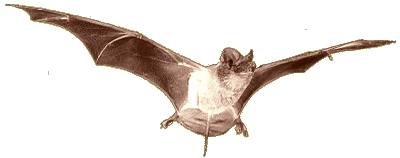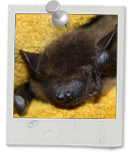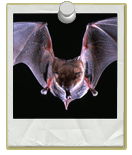BATS? BATS!!!Chiroptera - Various Species
GENERAL INFO: Bats come in many sizes and display a variety of different physical characteristics. The commonality between all bats is of course their wings, which are framed by elongated finger bones with a thin, delicate membrane between each digit. Florida has 13 year round or seasonal bat species, all of them insectivorous. Other fruit eating bats have made appearances in Florida but are uncommon. There are no vampire bats in Florida or North America for that matter. The most common bat in Florida is the Brazilian Free-Tailed Bat (pictured above), recognizable by the tail between its legs. Most bats don't have tails. THREAT: Bats are unlikely to pass on rabies, but can contract the disease. They usually die within 3-4 days of contraction. Bats do not attack humans, so exposure to rabies only occurs with improper handling of bats that have succumbed to the disease. The more urgent threat bats pose is when they take up residence in and around your home, where their waste (guano) can accumulate. Guano leaves a terrible mess and odor and can become an airborne inhalation risk - e.g. histoplasmosis. Histoplasmosis affects the lungs, and if left untreated, results in skin lesions, retinal damage, other organ failures, and ultimately death. REMOVAL / PREVENTION: Removing bats can be tricky as there are a lot of potential spots on a home where they can seek shelter. Getting bats to move out of one area without closing off other access points will get you nowhere. They will usually return to another spot on your home. A one-way valve system is used as part of the bat removal process as well as closing off all potential entry points. IMAGES: Click for larger image. GENERAL CAPACITIESPhysical Strength:* Resilience:* Speed:* Aggressiveness: Health Threat: Property Threat: Breeding / Propagation: *Averages taking into consideration a wide variety of bat species types. GEOGRAPHIC RANGE
AVG. BREEDING RATE
DID YOU KNOW?Bats come in two general flavors, the megabat and the microbat. Megabats eat fruit, nectar, or pollen and have good vision. Microbats generally eat insects and use echolocation to find their prey. There are families within the microbat suborder that eat small mammals, fish, frogs, fruits, pollen and the blood of other animals (vampire bats) |
||



